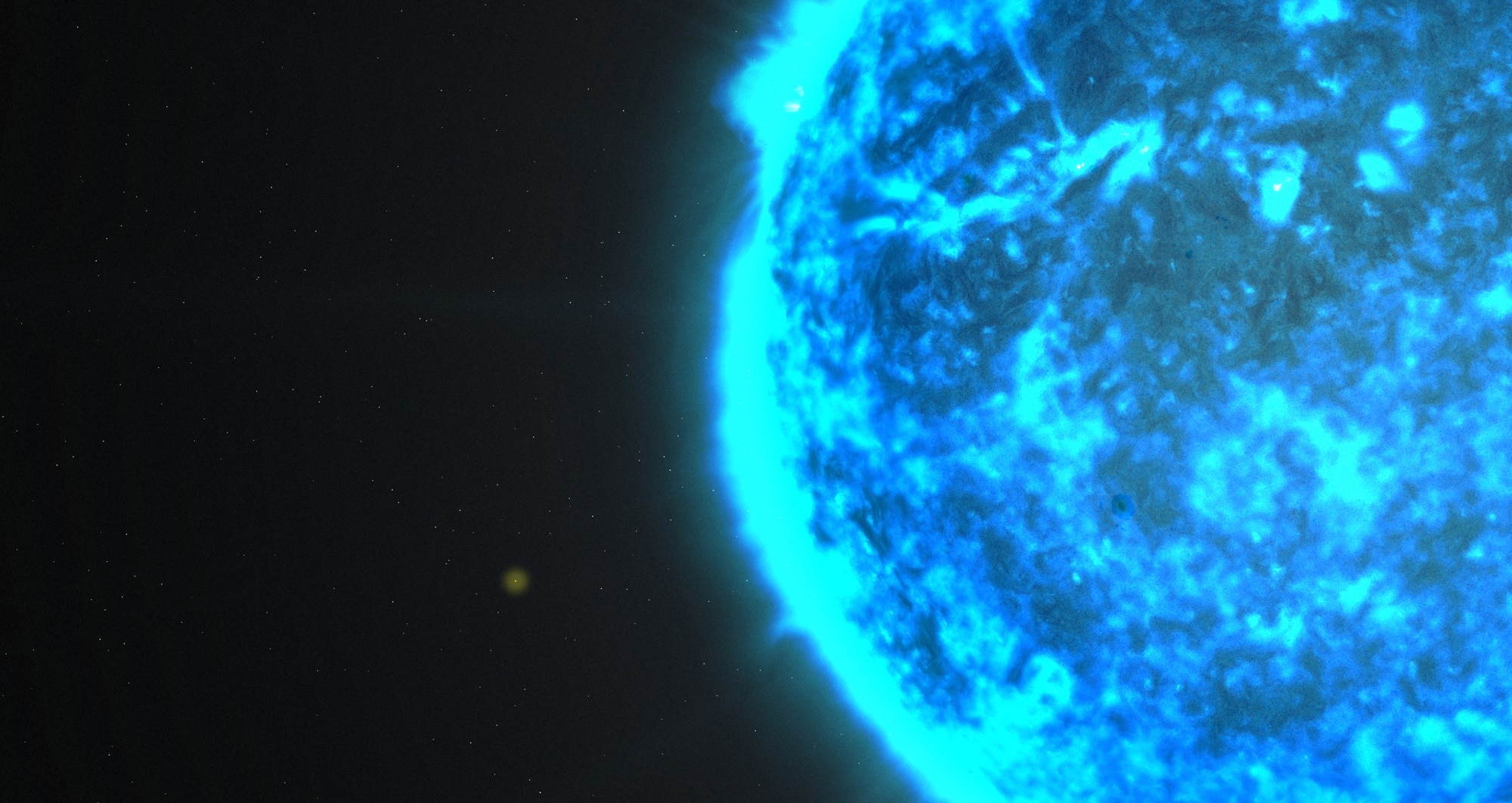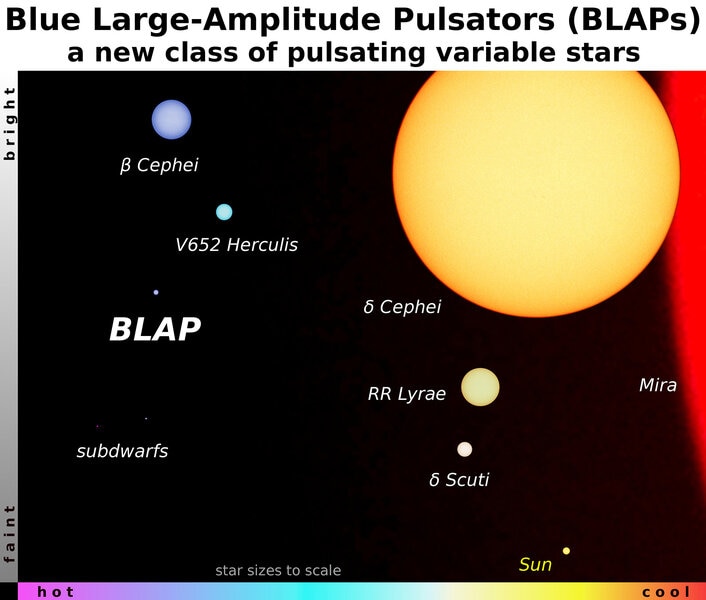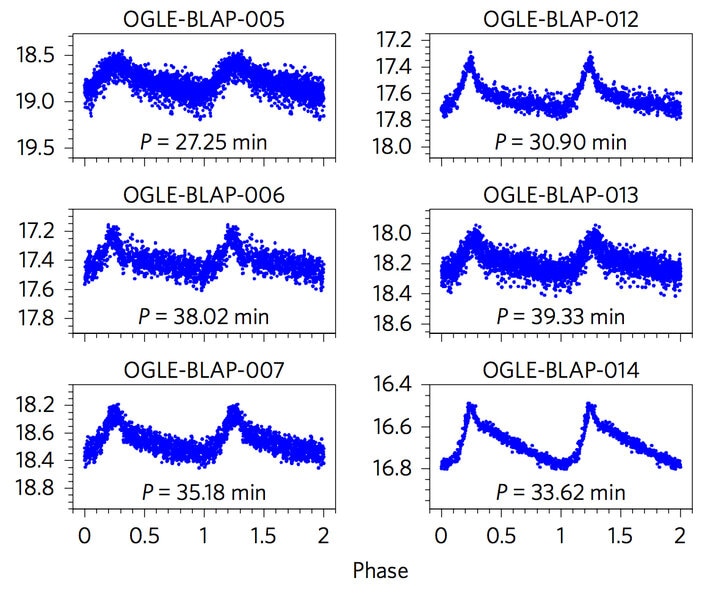Create a free profile to get unlimited access to exclusive videos, sweepstakes, and more!
Astronomers discover a new type of star: BLAPs

It’s not every day (or night, I suppose) that astronomers discover a new kind of star. In this case, it’s not so much that the stars are totally different from other stars, and if you saw one you’d know right away something was amiss. Instead, these stars behave differently, in a way never seen before. And because of that, it took a special kind of survey to even find them at all.
The stars are called Blue Large-Amplitude Pulsators, or BLAPs, an acronym that is both ridiculous and makes me very happy. They’re called this because a) they’re blue, and 2) they pulsate, changing in brightness by the relatively large amount of 20 – 45%. That’s a lot. If the Sun did this we’d be alternately cooked and frozen.
Not only that, but these stars brighten and dim really quickly: They can go from one extreme to the other and back again in just over 20 minutes. Of the dozen or so found, the shortest one pulses with a period of 23 minutes, and the longest 39. That’s incredibly fast. These are stars: Vast spinning balls of gas that tip the cosmic scales at an octillion tons or ten. Changing something that size that rapidly and by that much is fearsome.
And we don’t know what’s doing it. Not really.
The stars were found by the OGLE survey — the Optical Gravitational Lensing Experiment. This uses a huge 64-megapixel detector on a 1.3 meter telescope located in Chile. It observes a big chunk of the sky, roughly equal to four times the area of the full Moon on the sky at a time. It’s looking for gravitational microlensing events, when a star or planet passes directly between us and a more distant star. When this happens, the light from the more distant star is bent by the gravity of the intervening object, temporarily brightening it, sometimes by a significant amount. Quite a few distant planets have been found this way.
These events are rare, so OGLE looks at lots of sky where there are lots of stars, for example toward the center of our galaxy (I liken this to living in the suburbs and looking downtown). Over time, it has monitored a billion stars — yes, a billion — looking for changes in brightness.
It finds lots of things besides gravitational lenses, too, and because it’s looking at so many stars, it can find rare ones. BLAPs fit solidly into that category; finding a dozen out of a billion stars qualifies as “rare”.
And yeah, they’re odd. Blue “normal” stars (meaning ones like the Sun that are fusing one element into another in their core to generate energy) are relatively rare in the first place; the color means they’re hot, and that, in turn, generally means they’re massive. More mass = more gravity = more pressure in their cores, so the fusion reaction runs much more rapidly, heating the stars up.
This is true for any star. For some, though, they get a hitch in their gitalong. The rate at which heat escapes from the interior depends very strongly in how opaque the material in that layer is. If something happens to increase the opacity, the material will heat up. This causes the layer (and the material above it) to expand to try to cool off. The energy escapes, the material cools, and it contracts again, starting the cycle all over again.
This is just one type of pulsation, though it’s a popular one among pulsating stars. When it happens, it depends on a lot of factors, but the period of oscillation usually takes hours up to many months.
But BLAPs have cycles that last only a few dozen minutes! Also, weirdly, the pulsation rates for these stars are very stable. If you observe one now and measure the cycle length (say, 30 minutes), then wait a year and measure it again, it will have changed by only 1/5000th of a second (one part in ten million). That’s a pretty decent clock!
Usually, taking spectra will solve puzzles like this. Breaking the starlight into thousands of individual colors can reveal a vast amount of information...but, in this case, it deepened the mystery. The stars are definitely hot, and their temperature changes as you’d expect during the cycle. But the spectra also revealed the stars are far larger than you’d expect, as if you took a normal blue star and expanded it, made it puffier.
It’s likely they started off life as stars somewhat more massive than the Sun, but somehow lost a significant fraction of their outer layers; that would explain why they’re hot (though the puffiness is still weird). But it’s not at all clear how a star would lose so much mass if it’s just sitting out here in space! That happens for stars as they start to die, but these stars don’t appear to be near that part of their lives.
It’s possible that they started off lives as binary stars, two stars in a tight orbit around one another, and they merged. We’ve seen lots of objects like that before, but the problem then is how rare BLAPs are. Perhaps they are a special subset of merging binaries?
It’s not clear. The problem with studying rare objects is not having a lot samples to get a good statistical look at them. If you find something weird, is that endemic to all those types of stars, or coincidence? With a dozen of these beasts it’s really hard to say.
What I find fun about this story is not just that we’ve found a new celestial toy to play with and figure out. It’s more about the way it was found; entirely by accident in a survey designed to look for something entirely different. But because it looked at so much sky, and produced data that could be mined, the survey yielded something new.
It’s why I’m fond of surveys. You don’t know what you’ll find! And when you do find something interesting, you wind up with another thread of the cosmic tapestry you can put into its proper place.
















